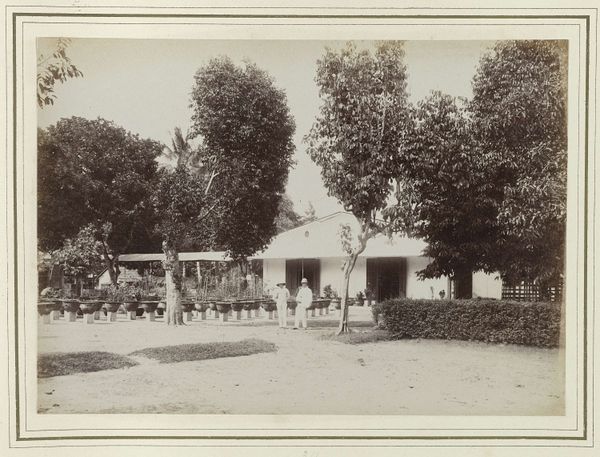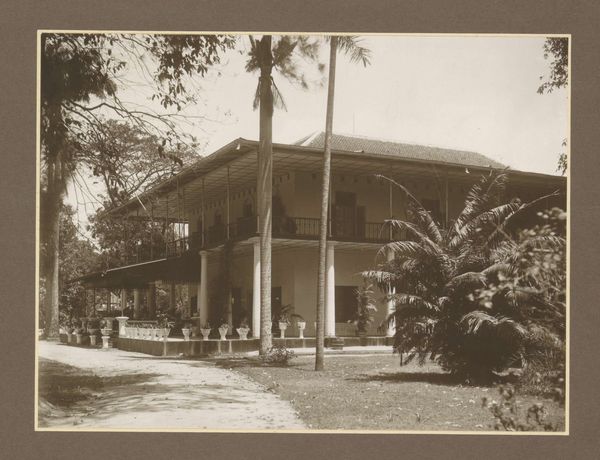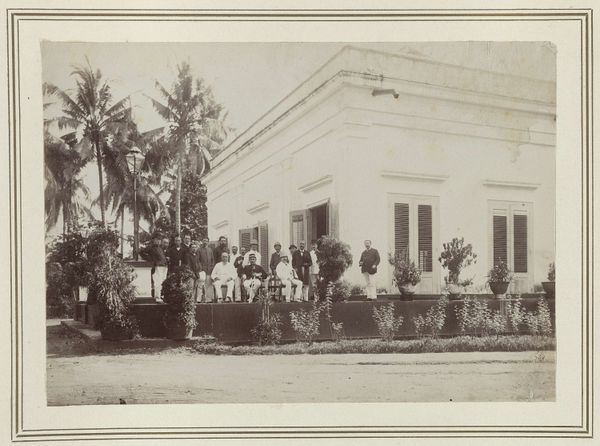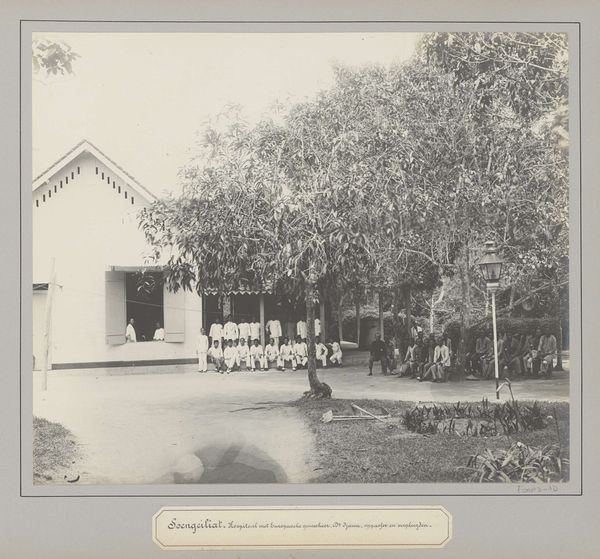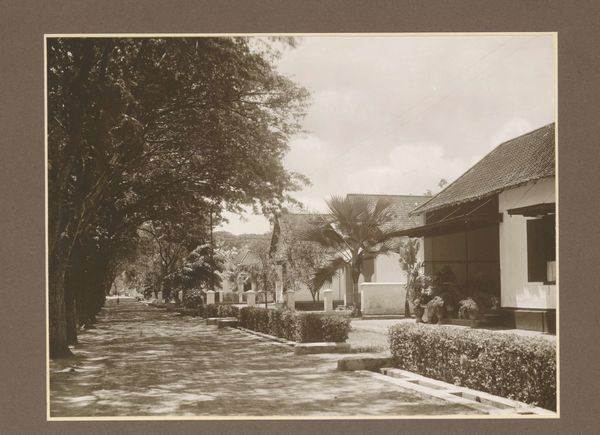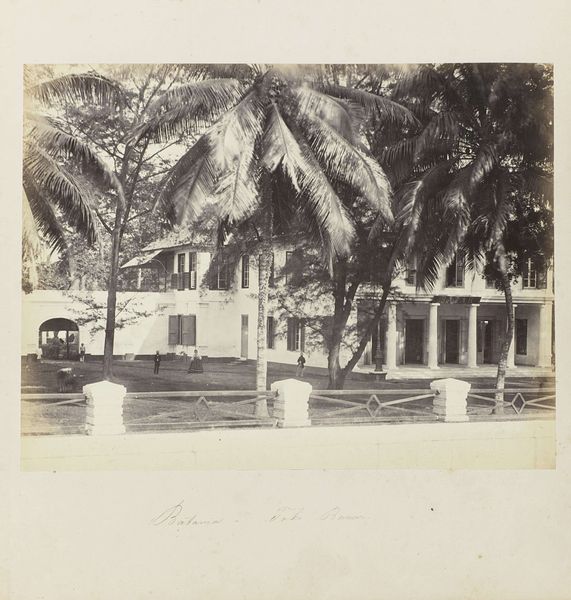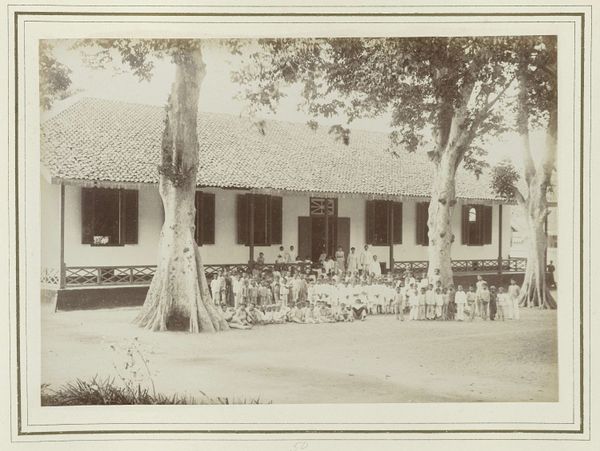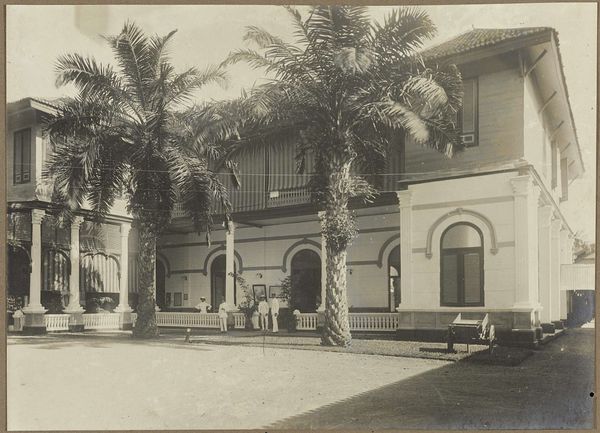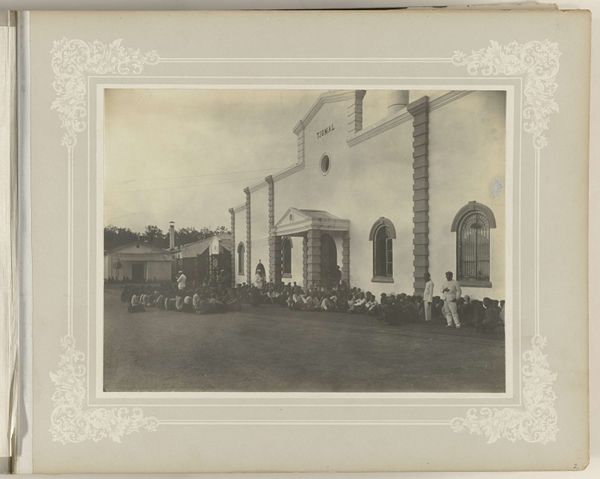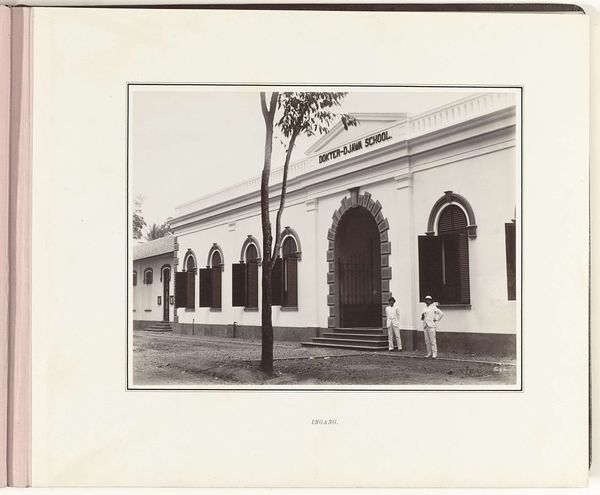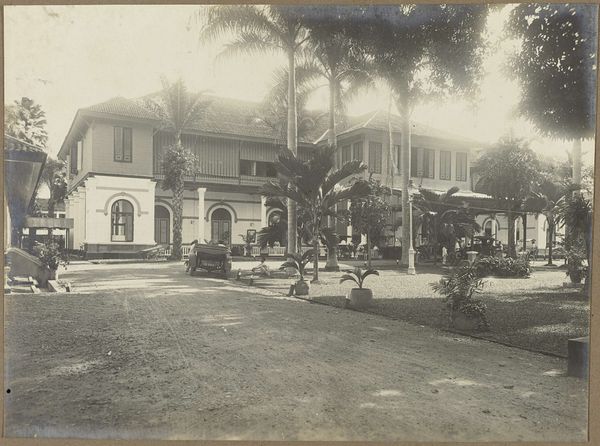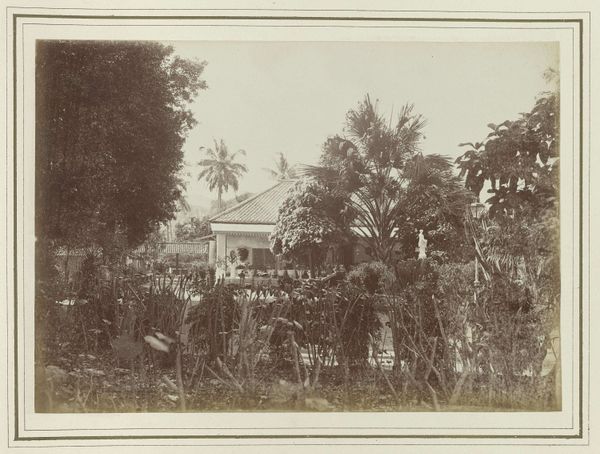
photography, albumen-print
#
portrait
#
landscape
#
photography
#
historical photography
#
genre-painting
#
academic-art
#
albumen-print
Dimensions: height 150 mm, width 210 mm
Copyright: Rijks Museum: Open Domain
Curator: Welcome to the Rijksmuseum. Before us is an albumen print by Kassian Céphas, entitled "School met kinderen," or "School with Children," created in 1886. Editor: It strikes me as a rather staged image, yet there's something genuinely captivating about its stark composition. The muted tones and the way the children are uniformly dressed lend it a sense of ordered discipline. Curator: Céphas worked extensively for the Sultanate of Yogyakarta, documenting its people and landscapes, becoming a pioneer of photography in Indonesia. This work can be seen as ethnographic documentation, capturing a moment in the colonial education system. The role of photography in shaping perceptions and power dynamics within the Dutch East Indies is also key. Editor: Yes, and when considering the materiality of the albumen print itself, there’s a beautiful layered texture visible. The process demanded skilled manipulation of light and chemistry. Note the way Céphas framed the scene—the choice of vegetation in the foreground, the structure of the school building—it adds layers of visual complexity that elevate the picture beyond a simple record. We see the landscape as co-creator. Curator: Exactly. And this interplay reminds us of how colonial power structures sought to not just control, but to create an ideal environment, reflected in institutions such as schools. Consider who had access to this image and what narratives it helped construct. Editor: It raises questions about the representation of childhood and labor within colonial contexts, certainly. The creation and consumption of these images reveal complex socio-economic realities. How does the photographer fit in? Curator: Photography in the 19th century served a crucial function in documenting and showcasing colonial efforts. These images reinforced narratives of progress and civilization, justifying foreign influence. Editor: Looking closely at the print’s surface, I am aware that it is the result of a complex layering and process, involving many skilled hands. So it provides insight, then, into a very specific technological and artistic network. Curator: A complex network deeply rooted in the era’s politics. Examining art through this lens reveals its broader socio-political role and effect on society. Editor: Ultimately, it underscores how inextricably intertwined art, material, labor, and context were and continue to be. It leaves me questioning, "what is truly revealed through this depiction?" Curator: An excellent question to carry with you as you continue through the collection.
Comments
No comments
Be the first to comment and join the conversation on the ultimate creative platform.
